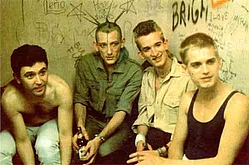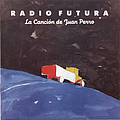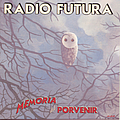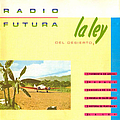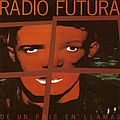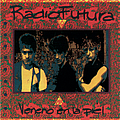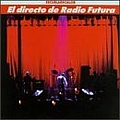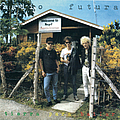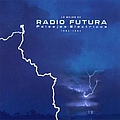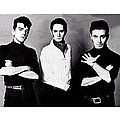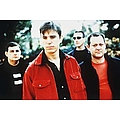Radio Futura Biography
One of the most important bands to appear in Spain immediately after the end of the Franco regime (1939-1975). With Parálisis Permanente, Gabinete Caligari and Alaska y Los Pegamoides, they were very influential in the movement soon to be branded as "Movida Madrileña". At the beginning, their sound was deeply influenced by the British new wave, although they appropriated their influences in a very particular way. Later developments would lead them to embrace other rhythms and influences, mainly from the Caribbean. In 1979, painter, singer and synthesizer experimenter Herminio Molero joined several other musicians to form a new rock group. Among them were the Auserón brothers (Luis and Santiago), who wrote then in a music magazine called Disco Express under the name Corazones Automáticos; Enrique Sierra, guitar player from Kaka de Luxe and percussionist Javier Pérez Grueso. They took their name from an Italian independent radio station. Molero contributed a fusion of electronic and traditional music to the style of the group, while Sierra added a punk tone. After months of rehearsing and a few live performances, they released their first album Musica Moderna (Modern Music) in 1980, which was an unexpected success beyond the specialized circles. Molero and Javier Pérez Grueso abandoned the group due to disagreements on the concept of their music, and the group is completed in 1981 with Solrac (Carlos Velázquez) who had already participated in the first album. In 1981 they recorded the single "La estatua del jardín botánico" (The Statue of the Botanical Gardens), produced by Jaime Stinus, followed by "Dance usted" (You dance), in which they developed a new fusion style ("funky-punk") that made them successful all around Spain. In 1984 they recorded their second album, La Ley Del Desierto, La Ley Del Mar (The Law of the Desert, The Law of the Sea), another unexpected commercial success, with the singles "Escuela de calor" (School of heat), "Historia de play-back" (History of play-back), "En Portugal" (In Portugal), "El nadador" (The swimmer) and "Semilla Negra" (Black seed). The album has two distinct parts, the dry and hard sounding Law of the Desert and a more watery Law of the Sea. The following year they published De un país en llamas (From a country in flames), a risky and more baroque album due to the introduced technological innovations. A remarkable eight singles were taken from this album. In 1989, the band is elected by popular vote as the best Spanish band of the 80s. By January 1990 they had completed what came to be their last studio LP, entitled Veneno En la Piel. The self produced album kept in the trail of the Latin Rock its predecessor had defined, with no major style changes other than an even more basic or "clean" sound. The album went straight to #1 in the charts and stayed there for weeks; impulsed by their record company, the band engaged in their biggest to date live tour. On Sept. 30th, 1990, the band closed it in Madrid with what was going to be their last live performance as a band. By the time when the tour was finished, the band members had grown weary of the musical business and the enormous amounts of money generated around the band, with no precedent in the Spanish indie pop-rock scene. Having achieved a huge notoriorety and a near absolute lead in the Spanish pop-rock scene (only contested by the synth-pop oriented trio Mecano), and also influenced by Enrique Sierra's health problems and Halsall's death by overdose in 1992, they decided it was time to disband at the height of their careers before the music industry devoured their creativity as artists.
Top Radio Futura Lyrics
Write a comment
What do you think about Radio Futura? Let us know in the comments below!
Radio Futura Albums
Similar artists
- Gabinete Caligari80s/Pop/Rock
- Nacha Pop80s/Pop
- Danza Invisible80s/Pop
- Loquillo Y Trogloditas80s/Rock
- La UnionPop/Rock
- Alaska Y Dinarama80s/Pop
- El Ultimo De La FilaLatin
